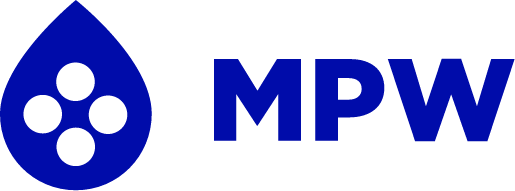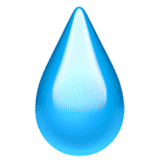Water Quality
Water = life. It's common knowledge water, along with food and oxygen, is fundamental in keeping human-kind alive. But why? What’s the big deal?
Water makes up a majority of our body weight and is essential in many important functions such as flushing waste from our bodies, regulating body temperature and brain function. With water playing such an important role in keeping us healthy, it makes sense the quality of water we are consuming should be top-notch.
Originating from the Muscatine Island Aquifer, Muscatine’s water is of such high quality, the only treatments required are small additions of chlorine, assuring biological safety; fluoride, assisting in children’s dental development; and phosphate, stabilizing the minerals found in water.
Approximately 60 water quality tests are completed each day in MPW’s laboratories to ensure our water supply not just meets but exceeds state and federal regulations. Drinking water is an easy choice for Muscatine area residents- keeping us healthy and hydrated!
2022 Water Quality Report for Muscatine
Lab tested, exceeding state and federal regulations
Inorganic Materials
Inorganic materials are naturally occurring elements in the water.
Inorganic Material Maximum Levels Detected
Organic Materials
Organic contaminants are naturally occurring organic elements found in the water.
Organic Materials Maximum Levels Detected
Disinfectants
Disinfectants are the addition of chlorine by MPW to ensure there's no bacteria in our water.
Disinfectant Maximum Levels Detected
Copper and Lead
Lead in drinking water is primarily from materials and components associated with service lines and home plumbing.
Lead and Copper Maximum Levels Detected
Quality Report Definitions
| Term | Definition |
|---|---|
| Action Level | The concentration of a contaminant that, if exceeded, triggers a treatment or other requirement that a water system must follow. |
| Inorganic Contaminant | Such as salts and metals, which can occur naturally or come from urban stormwater runoff, industrial or domestic wastewater discharges, oil and gas production, mining or farming. |
| LRAA | Locational Running Annual Average. |
| Maximum Contaminant Level (MCL) | The highest level of a contaminant allowed in drinking water. MCLs are set as close to the MCLGs as feasible using the best available treatment technology. |
| Maximum Contaminant Level Goal (MCLG) | The level of a contaminant in drinking water below which there is no known or expected risk to health. |
| Maximum Residual Disinfectant Level (MRDL) | The highest level of a disinfectant allowed in drinking water. There is convincing evidence that addition of a disinfectant is necessary for control of microbial contaminants. |
| Maximum Residual Disinfectant Level Goal (MRDLG) |
The level of a drinking water disinfectant below which there is no known or expected risk to health. MRDLGs do not reflect the benefits of the use of disinfectants to control microbial contaminants. |
| Microbiological Contaminants | Very small organisms, such as bacteria, algae, plankton, and fungi. |
| N/A | Not applicable. |
| ND | Not detected at testing limit. |
| NTU | Nephelometric Turbidity Units. |
| Organic Contaminants | Naturally occurring or synthetic substances containing mainly carbon, hydrogen, nitrogen, and oxygen. This includes most pesticides and industrial chemicals. |
| pCi/l | Pico curies per liter. |
| mg/l (ppm) | Parts of contaminant per million parts of water. One part per million (ppm) is equivalent to a single penny in ten thousand dollars. "PPM" may also be referred to as mg/l or milligrams per liter. |
| µg/l ( ppb) | Parts of contaminant per billion parts of water. One part per billion (ppb) is equivalent to a single penny in ten million dollars. "PPB" may also be referred to as mg/l or micrograms per liter. |
| ng/l (ppt) | Parts of contaminant per trillion parts of water. One part per trillion (ppm) is equivalent to a single penny in ten billion dollars. "PPT" may also be referred to as ng/l or nanograms per liter. |
| RAA | Running Annual Average. |
| TOC | Total organic carbon in untreated water. |
| Treatment Technique (TT) | A required process intended to reduce the level of a contaminant in drinking water. |
| Chlorine Disinfectant | The most common drinking water treatment is disinfection. Disinfection is considered to be the primary mechanism to kill bacteria and other germs to prevent the spread of waterborne diseases. Chlorine is the most widely used disinfectant. Disinfectants combine with organic and inorganic matter present in water to form chemicals called disinfection byproducts. EPA sets standards for controlling the levels of disinfectants and disinfectant byproducts in drinking water. The chart above reflects these standards and the Utility's ability to meet those standards. |
| Fluoride | Some fluoride is naturally present in the source water. The amount is carefully monitored every day so optimum concentration is maintained. If you have concerns about fluoride, you should discuss this topic with your dentist and doctor. |
| Nitrate | Nitrate in drinking water at levels above 10 ppm is a health risk for infants less that 6 months of age. High nitrate levels in drinking water can cause blue baby syndrome. Nitrate levels may rise quickly for short periods of time because of rainfall or agriculture activity. If you are caring for an infant, you should ask advice from your healthcare provider. |
| Lead | If present, elevated levels of lead can cause serious health problems, especially for pregnant women and young children. Lead in drinking water is primarily from materials and components associated with service lines and home plumbing. Muscatine Power and Water is responsible for providing high-quality drinking water, but cannot control the variety of materials used in plumbing components. When your water has been sitting for several hours, you can minimize the potential for lead exposure by flushing your tap for 30 seconds to 2 minutes before using water for drinking or cooking. If you are concerned about lead in your water, you may wish to have your water tested. Information on lead in drinking water, testing methods, and steps you can take to minimize exposure is available from the Safe Drinking Water Hotline or at http://water.epa.gov/drink/info/lead. |
| TTHMs (Total Trihalomethanes) | Some people who drink water containing trihalomethanes in excess of the MCL over many years may experience problems with their liver, kidneys, or central nervous system and may have an increased risk of getting cancer. |
| Turbidity | An indicator of treatment filter performance and is regulated as a treatment technique. |
| Unregulated Contaminants | The US Environmental Protection Agency has developed an unregulated contaminant monitoring program to better understand the existence of contaminants in the environment. These contaminants are not regulated by the National Primary Drinking Water Regulations, but are known or anticipated to occur at public water systems throughout the nation and may warrant regulation under the safe Drinking Water act. In 2014, MP&W was required to test for 30 unregulated contaminants. |
The EPA requires monitoring of over 80 drinking water contaminants. Those listed above are the only contaminants detected in your drinking water. For a complete list, contact Muscatine Power and Water at (563) 262-3360.
Unregulated Contaminants
The US Environmental Protection Agency has developed an unregulated contaminant monitoring program to better understand the existence of contaminants in the environment.
These contaminants are not regulated by the National Primary Drinking Water Regulations, but are known or anticipated to occur at public water systems throughout the nation and may warrant regulation under the safe Drinking Water act. In 2019, MPW was required to test for 28 unregulated contaminants. The detectable contaminants are listed below.
| Analyte | Unit | Average | Range |
|---|---|---|---|
| Chloroacetic acid | ug | <2.0 | <2.0 |
| Bromoacetic acid | ug | <0.3 | <0.30 |
| Dichloacetic acid | ug | 1.95 | 1.4-2.6 |
| Trichloroacetic acid | ug | 1.26 | 0.91-1.6 |
| Bromochloroacetic acid | ug | 1.14 | 0.94-1.5 |
| Dibromoacetic acid | ug | 0.6 | 0.5-0.76 |
| Bromodichloroaceti acid | ug | 1.23 | 1.0-1.5 |
| Chlordibromoaceti acid | ug | 0.74 | 0.62-0.86 |
| Tribomoacetic acid | ug | <2.0 | <2.0 |
| Bromide | ug | 77.83 | 23-216 |
| Total Organic Carbon | ug | 1.27 | <1-1.7 |
| Manganese | ug | 111.85 | 50-200 |
| Germanium | ug | <0.30 | <0.30 |
| alpha-Hexachlorocyclohexane | ug | <0.010 | <0.010 |
| Chlorpyrios | ug | <0.03 | <0.03 |
| Dimenthipin | ug | <0.2 | <0.2 |
| Ethoprop | ug | <0.03 | <0.03 |
| Oxyflourfen | ug | <0.05 | <0.05 |
| Profenofos | ug | <0.3 | <0.3 |
| Tebuconazole | ug | <0.02 | <0.02 |
| Total Permethrins | ug | <0.04 | <0.04 |
| Tribufos | ug | <0.07 | <0.07 |
| o-Toluidine | ug | <0.007 | <0.007 |
| Quinoline | ug | <0.02 | <0.02 |
| Butylated | ug | <0.03 | <0.03 |
| 2-Propen-1-ol | ug | <0.50 | <0.5 |
| 1-Butanol | ug | <2.0 | <2.0 |
| 2-Methoxyethanol | ug | <0.4 | <0.4 |
| PFAS (more info here, updated Q1 2024) | |||
| -Perfluorooctanoic acid (PFOA) -Perfluorooctanesulfonic acid (PFOS) |
ng/l ng/l |
4.2 4.3 |
2.7 - 5.0 3.1 - 6.0 |
The EPA requires monitoring of over 80 drinking water contaminants. Those listed above are the only contaminants detected in your drinking water. For a complete list, contact Muscatine Power and Water at (563) 262-3360. In 2022, the IDNR began testing water systems for PFOA and PFOS (collectively PFAS). Some MPW facilities exceeded an EPA drinking water lifetime interim health advisory level (PFOA 0.004 ppt and PFOS 0.02ppt) for the PFAS compounds shown above. Public notice was provided for the exceedance. Additional information about the history of PFAS compounds, their prohibition from continued use, and ongoing testing results of the MPW water system can be found here (mpw.org/pfas).













